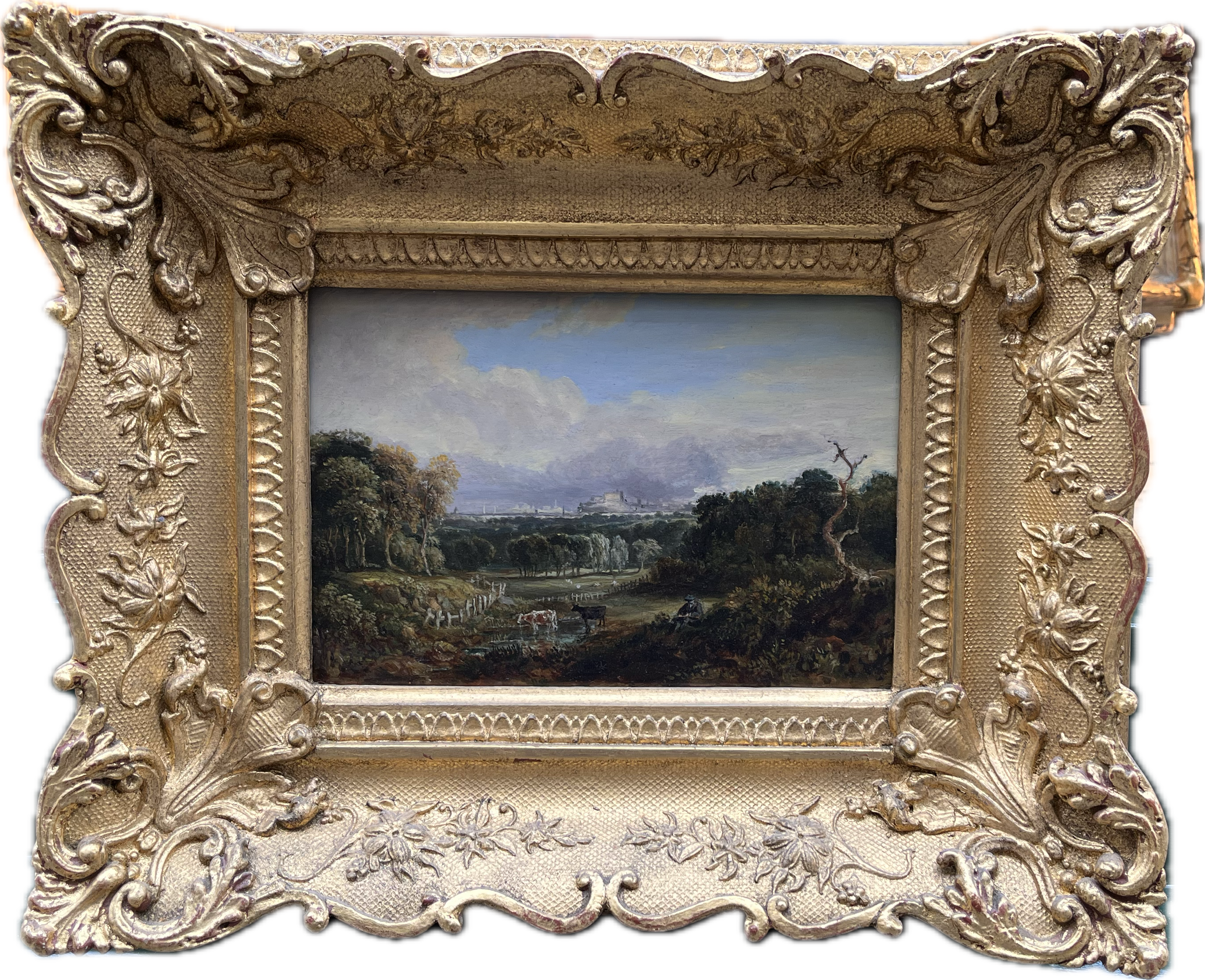

Patrick Nasmyth
A View of Edinburgh and self portrait
Oil on panel
Image size: 6 x 9 1/4 inches
Original gilt frame
This painting appears as a charming countryside scene, but closer inspection reveals a striking cityscape in the background, instantly recognisable as the skyline of Edinburgh. The castle naturally dominates the background, and yet remains dwarfed by the expanse of countryside surrounding the impregnable fortress. Against this dramatic background, Nasmyth has painted himself into the scene, crouched over a sketchbook as some cows graze idly nearby.
The influence of Dutch landscape artists is readily apparent in this worth by Nasmyth, particularly in regard to the use of an elevated viewpoint combined with smaller scale scenes and figures in the foreground. The realism of the natural life is vivid, and viewers are instantly able to see the striking effects of Nasmyth’s insistence on painting nature from real life. The softness of the clouds in the sky is rendered exquisitely, as is the threat of a storm cloud forming over the imposing Edinburgh Castle. Despite the menacing storm and desolate fortress, there is a sense of serenity to the painting, emulating the peacefulness Nasmyth must have felt when embarking on his painting expeditions.
Patrick Nasmyth
Nasmyth was born in Edinburgh in 1787 as the eldest son of artist Alexander Nasmyth, joining a family of immense artistic success and renown. Along with his siblings, Nasmyth was given art lessons from his father from an early age. After an unfortunate accident as a teenager, Nasmyth lost the use of his right hand and was forced to relearn how to paint with his left.
Nasmyth’s oeuvre is dominated by scenes of Scotland and Edinburgh, a subject matter that continued even after he moved to London in the early 19th century. As with his father, Nasmyth was heavily influenced by Dutch landscape masters, presumably having seen them on display at prominent London galleries. His landscape scenes were initially exhibited at the Royal Institution and the Scottish Academy Edinburgh from 1808, before receiving their debut at the Royal Academy and the British Institute in 1811, where they were immensely successful. Nasmyth was also one of the founding members of the Royal Society of British Artists. He was well known for his insistence on studying directly from nature, often embarking on painting expeditions with a small mobile tent that allowed him to keep working despite poor weather conditions.
In 1831, Nasmyth contracted pneumonia after painting a scene in the London countryside, and passed away shortly after. Despite the popularity of his work, Nasmyth died in poverty and the funds for his funeral were raised by many of his fellow artists. His works are part of collections in galleries in Edinburgh, the Fitzwilliam Museum Cambridge, the Ashmolean Museum, the National Gallery, the Victoria and Albert Museum, and the Metropolitan Museum of Art in New York.



